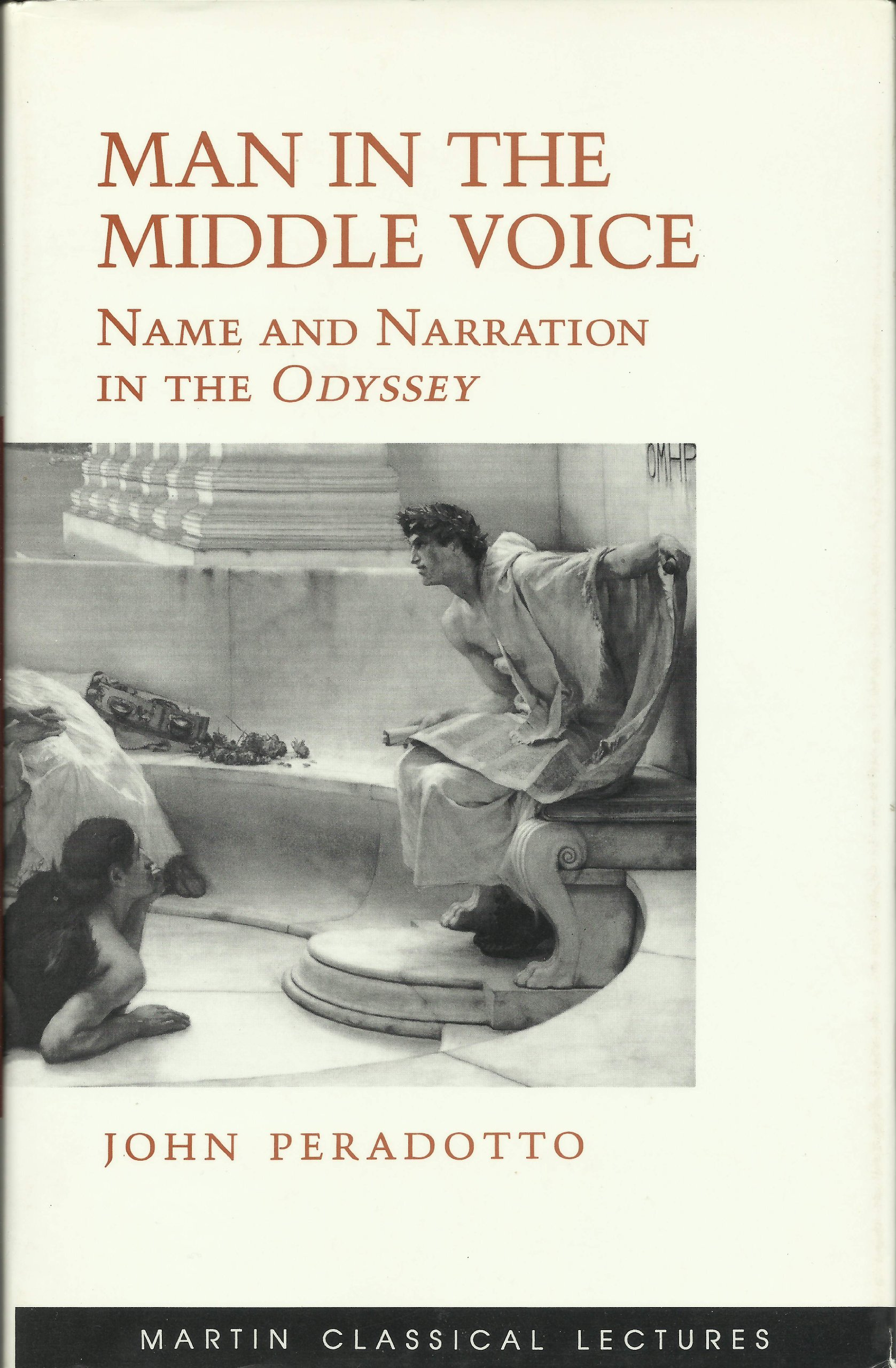Man in the Middle Voice: Name and Narration in the Odyssey
Beginning with a diagnosis of the current state of American classical philology, John Peradotto proceeds to concentrate on textual practices of naming and narrating in the Odyssey from a perspective that blends traditional philological with semiotic and narratological techniques. What emerges from this reading is a view of the poem as a tense opposition between “myth” and “folktale,” recognized as…
Beginning with a diagnosis of the current state of American classical philology, John Peradotto proceeds to concentrate on textual practices of naming and narrating in the Odyssey from a perspective that blends traditional philological with semiotic and narratological techniques. What emerges from this reading is a view of the poem as a tense opposition between “myth” and “folktale,” recognized as vehicles for contrasting ideological opinions on the world.
With terms drawn from Bakhtin’s concept of “dialogism,” the Odyssey‘s two voices are characterized as “centripetal” and “centrifugal”—the one associated with dominant political power, with the conventional, the official, and the heroic; the other, with the personal, the disempowered, and the popular, with the antics of the Autolycan trickster and outlaw. As he examines the more audible, “centrifugal” voice, Peradotto shows how the poet’s sense of power over his material, represented in Odysseus’ ability to narrate a fictitious world, creates a “character” of infinite variety, one whose self-chosen anonymity becomes a paradigm for a subtler ideology of the self than that embodied in the Iliadic Achilles.
Originally published in 1990 by Princeton University as part of Martin Classical Lectures delivered at Oberlin College.
Use the following persistent identifier: http://nrs.harvard.edu/urn-3:hul.ebook:CHS_Peradotto.Man_in_the_Middle_Voice.1990.
Copyright, Trustees of Oberlin College. Published here with permission.

